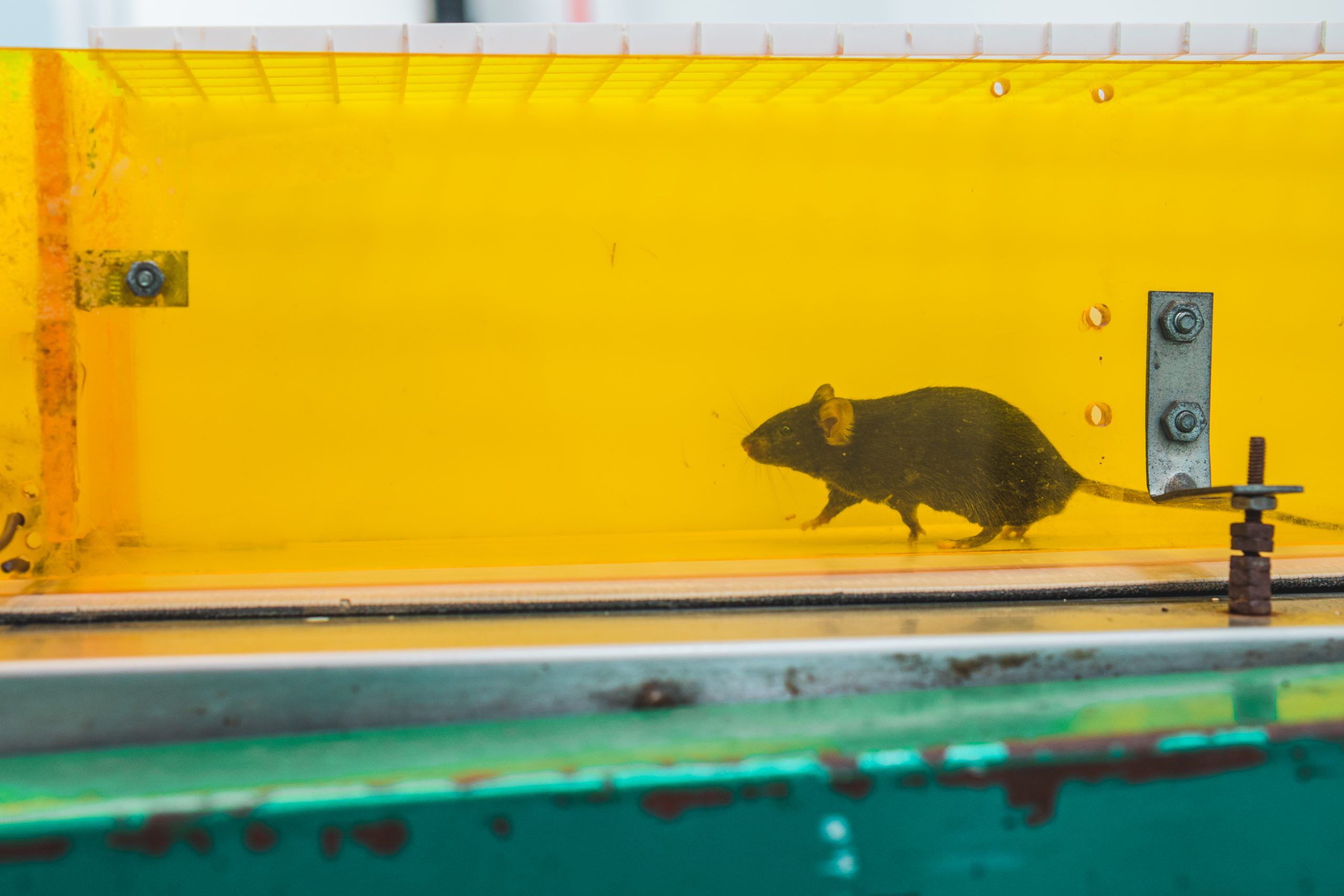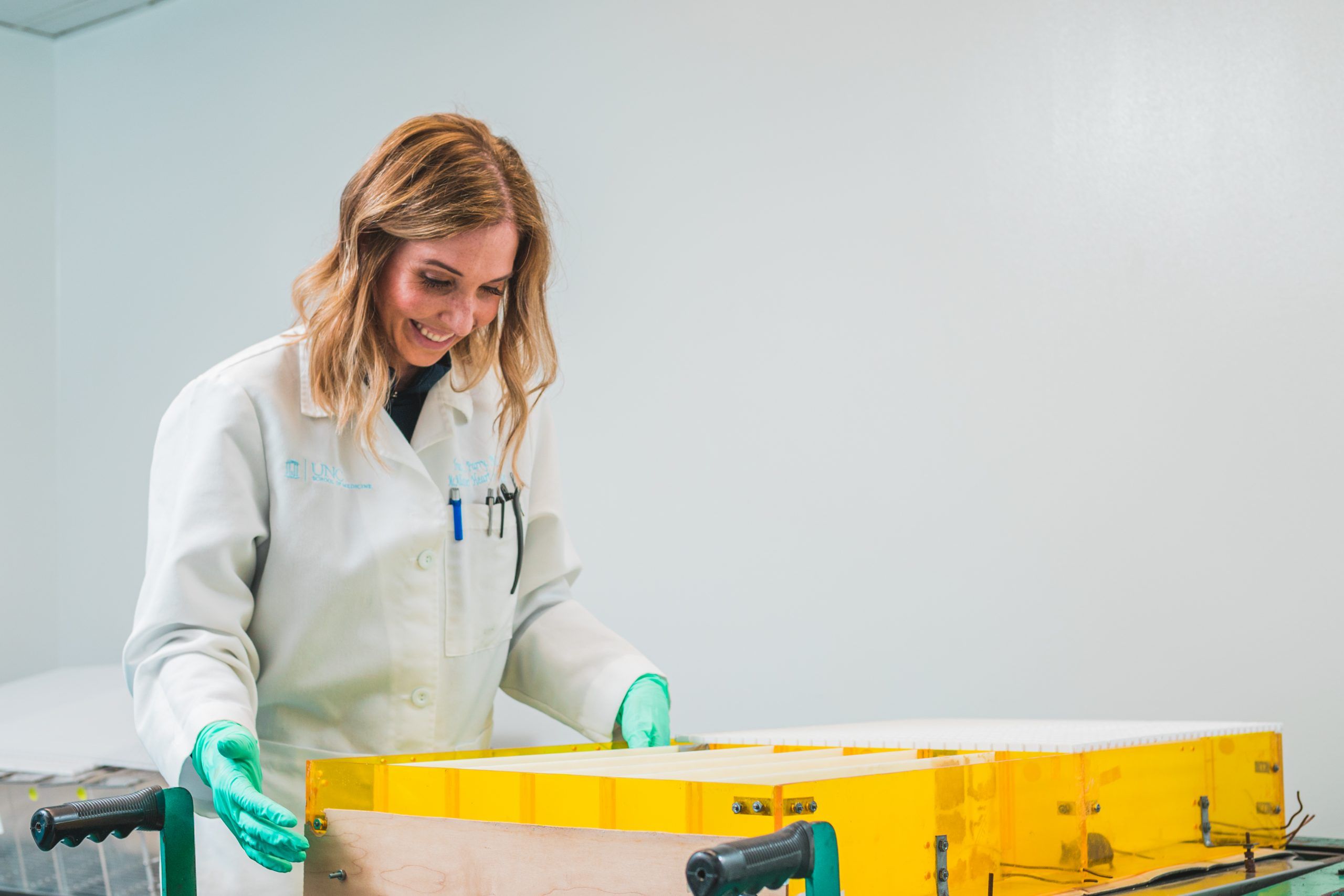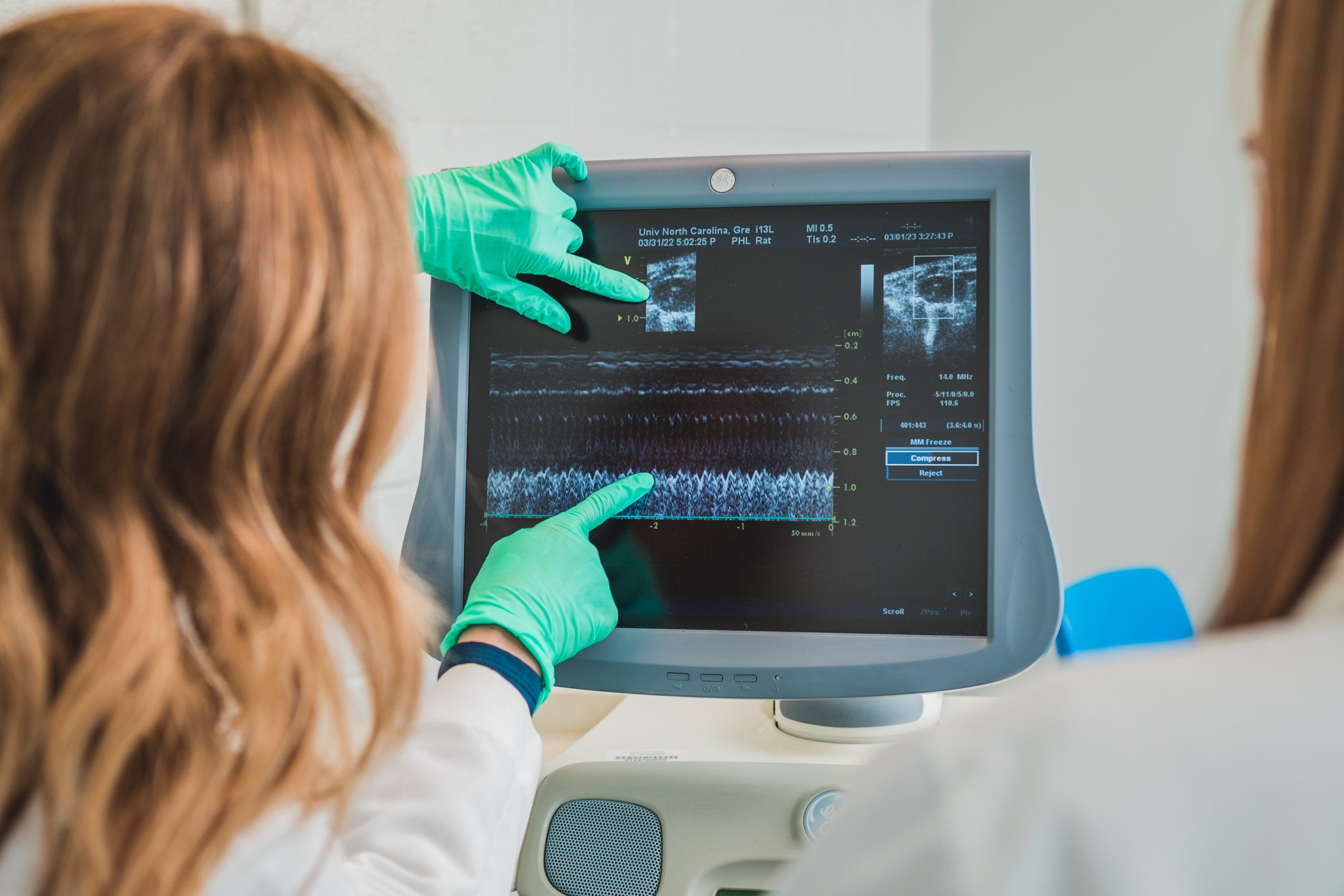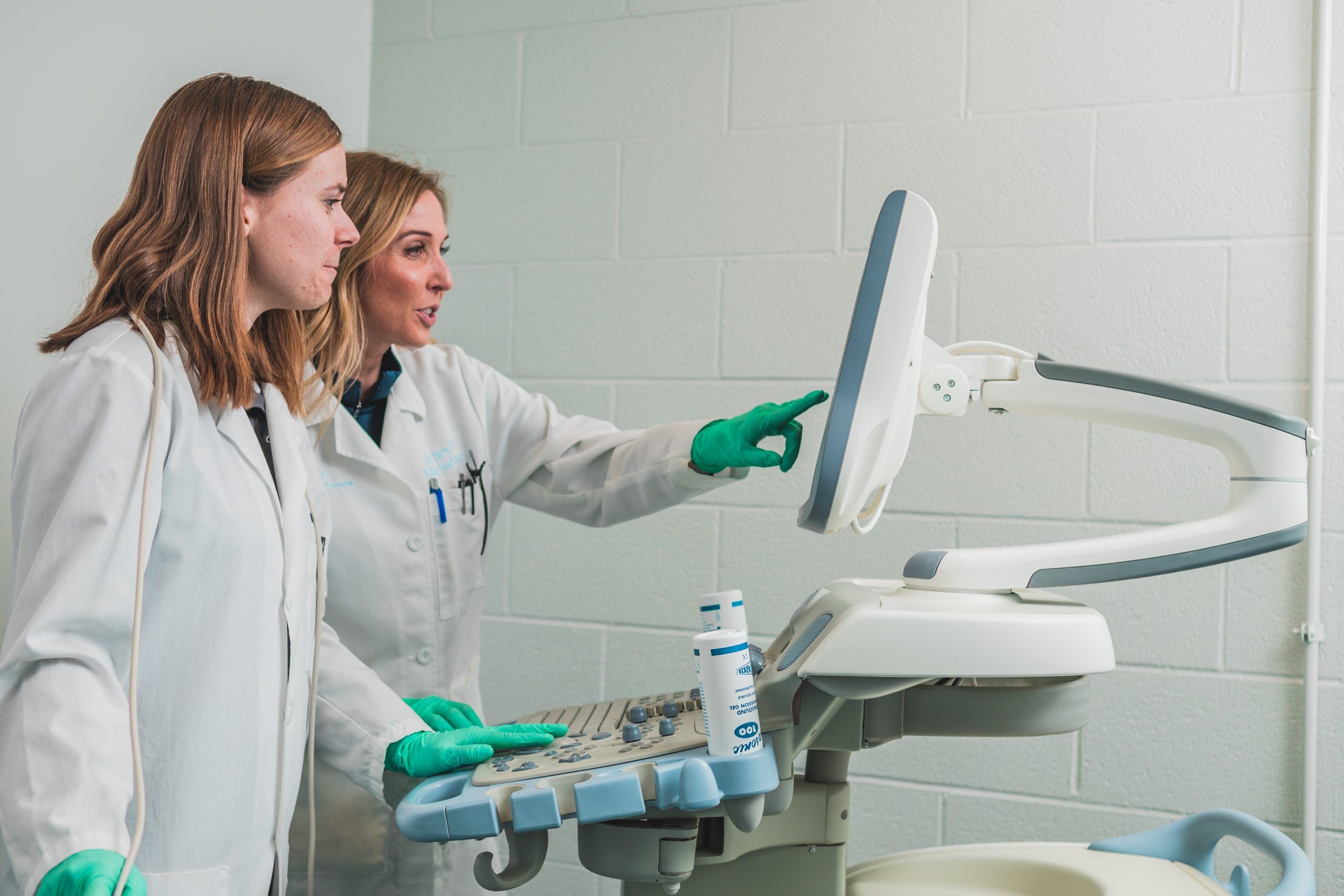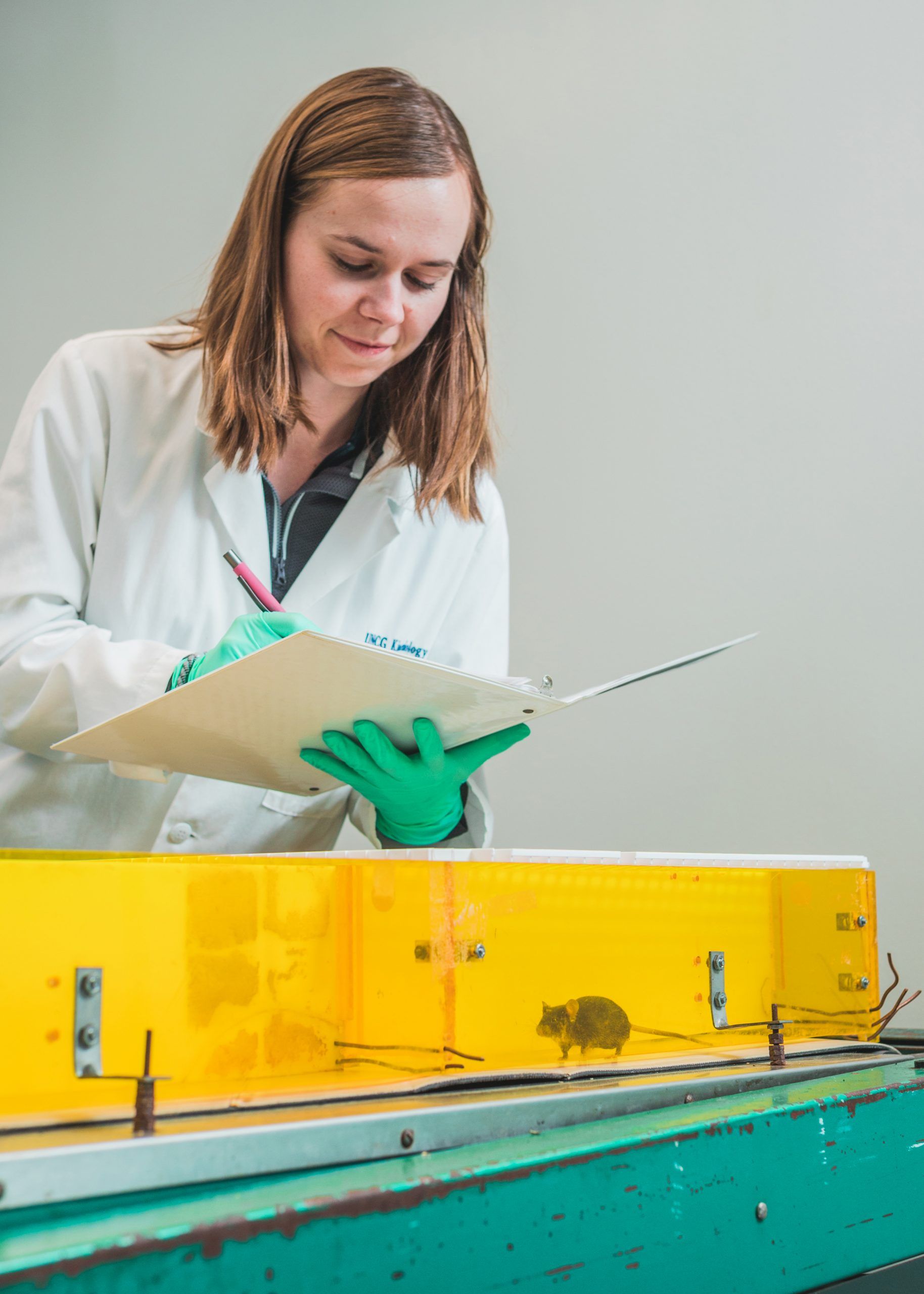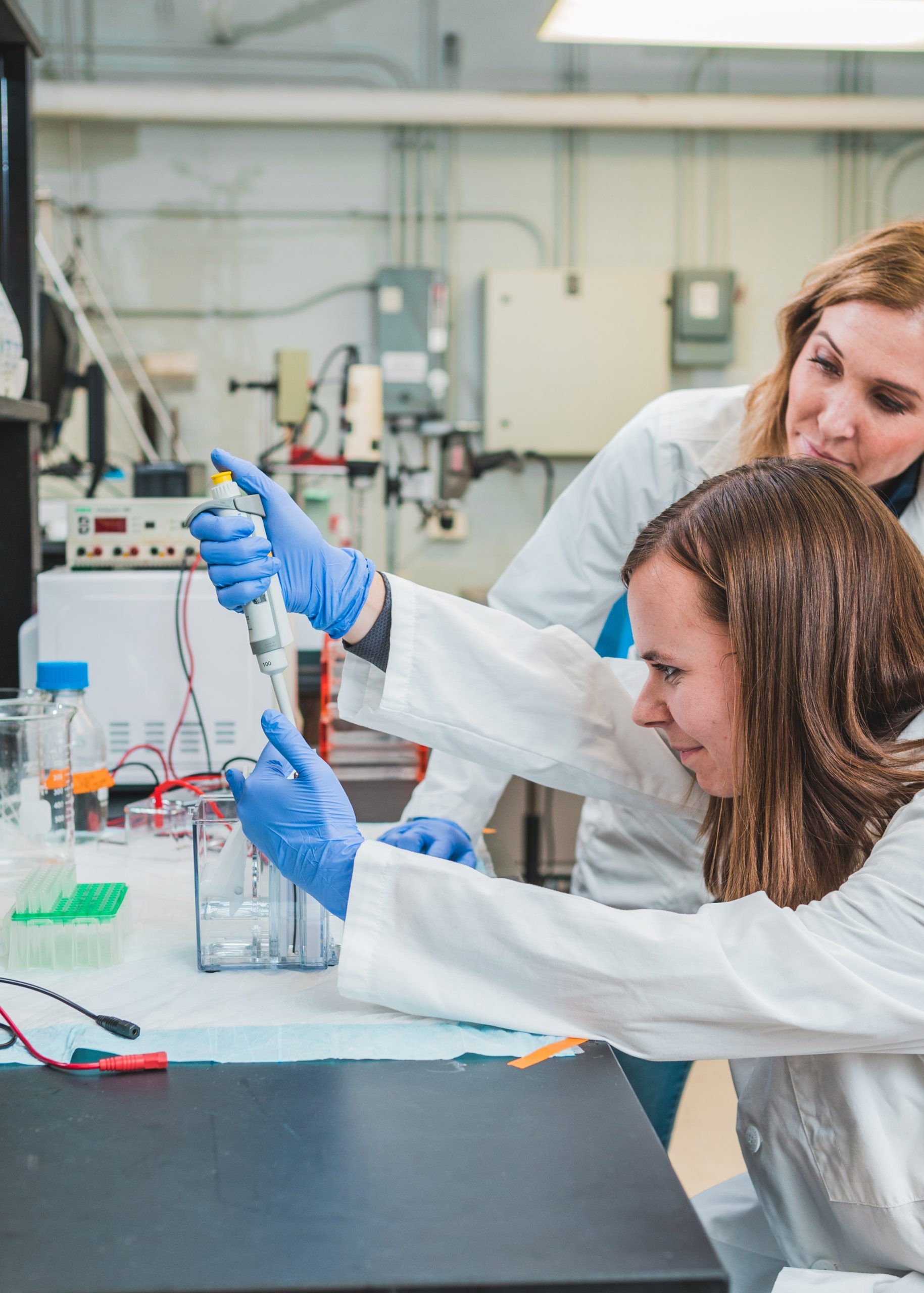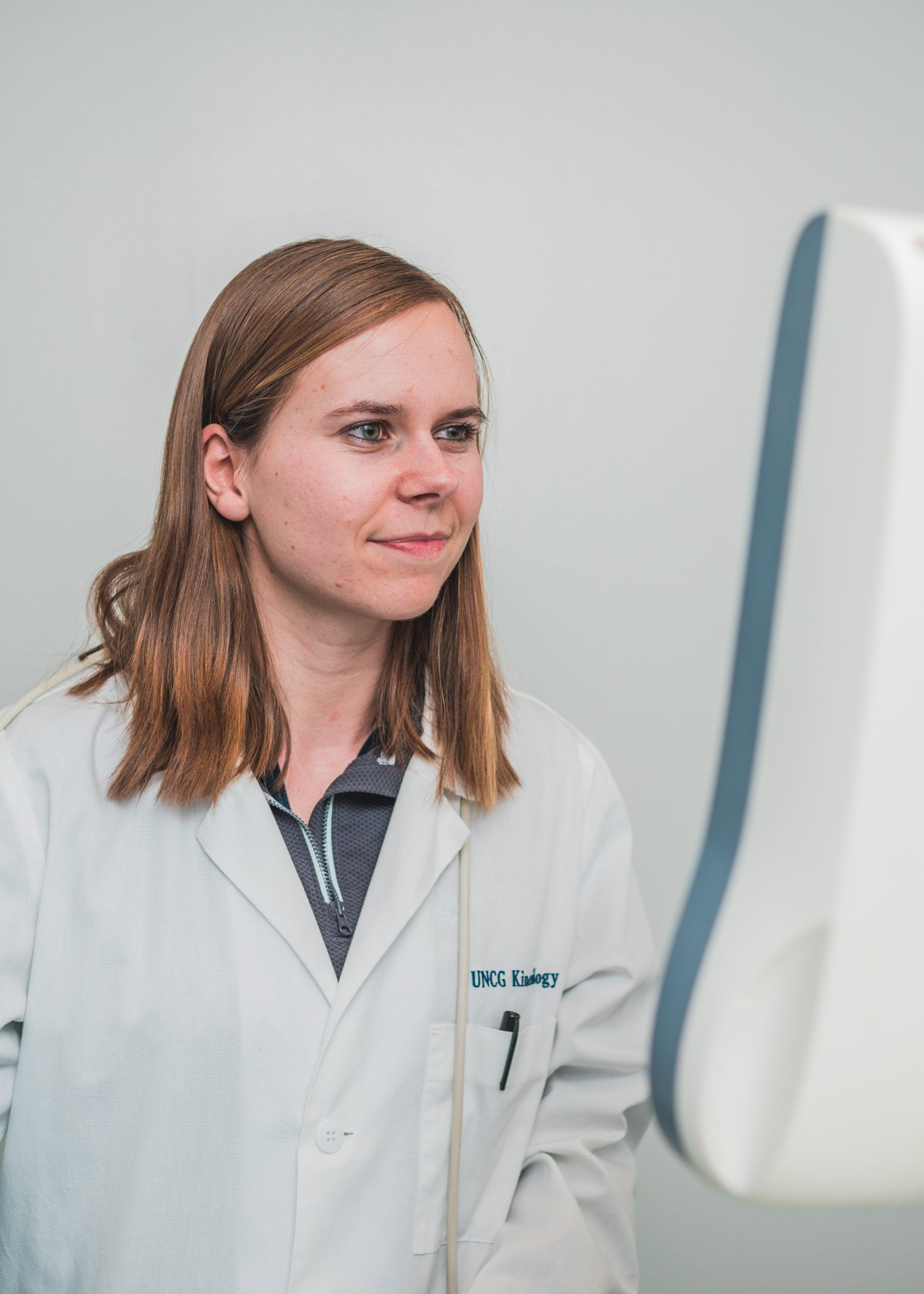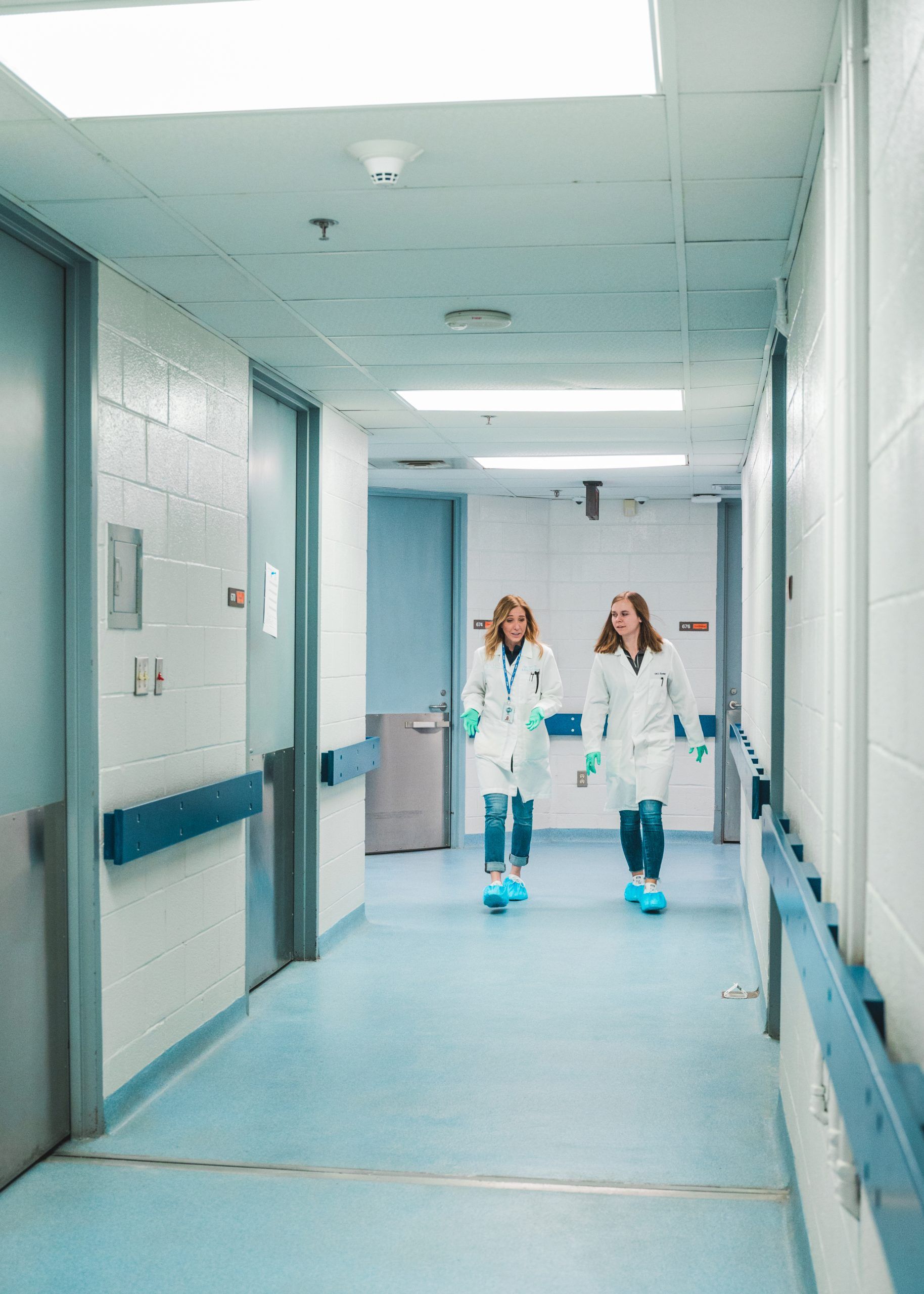TREADMILL TREATMENT
TREADMILL TREATMENT
A dozen mice keeping pace on a half-pint treadmill could be a key to prolonging the lives of cancer patients and others with chronic diseases.
This is the scene in Dr. Traci Parry’s exercise oncology research lab, one of just a handful at the forefront of exploring how exercise can increase survival rates and longevity in cancer patients.
“We’re interested in exercise as therapy for cancer cachexia, but we’re also interested in exercise as a potential adjuvant therapy, alongside traditional types of treatment,” says Parry, who is an exercise physiologist by training.
Cachexia is a muscle and fat wasting disorder that occurs in patients with chronic diseases such as cancer and HIV. It can affect up to 80 percent of cancer patients and is responsible for about a third of cancer-related deaths.
“I’m really curious about what exercise is doing to the tumor, to its initiation and growth and development,” says Parry. “And then whether or not that is going to help aid traditional forms of treatment.”
Parry’s mice trials show that the larger the tumor, the worse the level of cachexia. They’ve also found that when exercise is implemented early in life, it reduces cancer-related issues later on – protecting skeletal and heart muscle and slowing tumor growth. More frequent workouts also increase benefits.
STORY HIGHLIGHTS
Dr. Traci Parry’s lab explores exercise as a treatment for cancer cachexia, a muscle and fat wasting disorder that occurs in patients with chronic diseases.
→ exercise at any point offers protection
→ a student’s research journey
→ even low-intensity exercise matters
Story highlights
Dr. Traci Parry’s lab explores exercise as a treatment for cancer cachexia, a muscle and fat wasting disorder that occurs in patients with chronic diseases.
→ exercise at any point offers protection
→ a student’s research journey
→ even low-intensity exercise matters
📷 Mouse echocardiograms and other tests give Parry and student Louisa Tichy insight on cachexia. Mice that exercised on the lab’s treadmill, they say, saw slower tumor growth and reduced levels of cachexia.
These findings conflict with prior research suggesting that the size of a tumor is not necessarily related to the level of cachexia. “So far in our studies, those things go hand in hand,” Parry says. “That is really powerful.”
Parry says often patients will progress to a later stage of cachexia before they’re diagnosed, and there is no standard treatment.
“It’s almost the kiss of death,” she says. “Once a cancer patient is diagnosed with cachexia, they stop responding to traditional types of treatments, like chemotherapy and immunotherapy.”
Cachexia accelerates the breakdown of skeletal and heart muscle, leading to lower survival rates, which is why Parry’s studies are focused on the ability of exercise to protect the musculature.
Exercise-training the mice prior to implantation of tumor cells correlated with significantly slower tumor growth. Exercising once the tumor cells were implanted showed similar, though less robust results. Allowing the tumor to grow before beginning an exercise regimen for the mice provided the smallest benefits.
“The major point is that exercise initiated at any time point in the cancer continuum offered some protection,” Parry says.
“This is huge for the field of exercise physiology.” It hammers home the idea that physical activity can have a serious impact on slowing disease progression.
For Parry, the findings highlight her dream of exercise becoming a standard of care for cancer patients. Parry’s grandmother and cousin both passed away from cancer complications, so the research hits close to home.
“It gives me hope that, down the road, we could create cancer rehab programs prescribed like cardiac rehab,” she says.
Parry is a first-generation college graduate with degrees in sport and exercise science. As an undergraduate, she found a job working with faculty who were researching if exercise would protect the hearts of rats on the drug adriamycin.
“It was one of the most rewarding things to be a part of,” Parry says of her undergraduate research experience. “I was hooked.”
Seeing how powerful exercise might be to cancer survivors helped her choose her career path. She went on to complete postdocs in pathology and laboratory medicine before landing her first faculty position at UNCG in 2018. “The work is a dream come true,” she says.
“There’s a whole field that’s interested in making athletes bigger, better, faster, stronger. While I think that stuff is amazing, that was never really what drew me. I’m much more interested in how exercise can help us live longer, healthier lives, and particularly how it can help prevent and rehabilitate chronic diseases.”
Her cadre of mice is a huge part of that work. Dr. Parry says she is known as “the mouse girl” on campus – she is the only animal researcher in the kinesiology department. But it’s a term she doesn’t seem to mind.
“For me,” Parry says, “it’s an honor to work with them.”
WALK TO SLOW CANCER
WALK TO SLOW CANCER
On a journey from undergraduate to doctoral research, a Parry lab student explores the impact of low-intensity exercise
One critical finding from Parry’s lab was spearheaded by student Louisa Tichy, whose mouse trials have found that low-intensity exercise seems to be effective in slowing tumor growth and protecting musculature.
“High-intensity exercise can be daunting to someone suffering from an illness. We wanted to see if getting a patient to walk 45 minutes a day, just to get them moving and their metabolism up, could help in their prognosis, as well as quality of life,” Tichy says.
Tichy, who came to UNCG from Germany as an undergraduate on a golf scholarship in 2016, was drawn to Parry’s lab in part after watching her grandfather waste away due to cancer-related cachexia. She originally had plans to attend medical school, but once she discovered Dr. Parry’s lab, everything changed.
As a kinesiology major, Tichy conducted undergraduate research in UNCG’s applied neuromechanics research lab during her junior year. But the next year, she discovered Parry’s exercise oncology lab and realized that she was much more drawn to learning about cell functions in the body and studying the physiological effects of exercise and cancer.
She loved her work with Parry so much that she decided to pursue graduate research in exercise physiology at UNCG. Through the combined MS-PhD program, she has already completed her master’s and is on track to graduate with her doctorate in Spring 2025.
Tichy knew from prior research with her mentor that – at least in mice – high-intensity exercise can increase survival rates and longevity in tumor-bearing mice with cachexia. But that level of exercise is not always feasible for the human patients she and Parry hope to help.
They wondered, could other exercise modalities provide similar outcomes?
As the only graduate student in her lab, Parry says, Tichy did most of the heavy lifting on the study, spending hours alone, coaching her team of mice to run on the small treadmill.
After a period of time, Tichy would measure the tumors with a caliper and record the size. She was often amazed by the results.
“It’s the tumor measurements that surprise me every time,” Tichy says. “We always see a consistent pattern, no matter what exercise modality.”
Tichy’s earlier research with Parry has already garnered her a publication in Frontiers in Cell and Developmental Biology and a first place poster award at the American College of Sports Medicine Southeast Chapter meeting. In September, she will present her work in the American Society for Investigative Pathology’s Young Investigator Keynote Seminar Series.
For her dissertation, she is exploring how low-intensity exercise might affect the efficacy of immunotherapies on cancer.
“Cancer is one of the leading causes of death, and we still don’t know how to manage it,” she says.
“Finding a better way to treat cancer, and to make the patient feel better, is important to me.”
📷 Tichy’s earlier research with Parry has already garnered her a publication in Frontiers in Cell and Developmental Biology.
